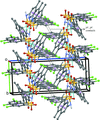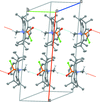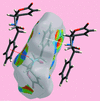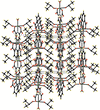issue contents
May 2017 issue

Cover illustration: 1,3,2-Diazaphospholidines are a class of N-heterocyclic phosphines (NHPs) that feature an N–P–N moiety bridged by a C2H4 fragment, thus forming a five-membered ring. Derivatives are often substituted by alkyl, aryl or halogen groups at the phosphorus position, allowing them to serve as both ligands and/or precursors in organometallic chemistry. The featured compound, 2-chloro-1,3-bis(2,6-diisopropylphenyl)-1,3,2-diazaphospholidine 2-oxide, is closely related to these compounds and its analogues are commonly used as precursor molecules for the synthesis of pharmaceuticals targeted towards immunosuppressants and chemotherapy medications. See: Veinot, Hendsbee & Masuda [Acta Cryst. (2017). E73, 476—480].
research communications










































Crystal structure of 2-chloro-1,3-bis(2,6-diisopropylphenyl)-1,3,2-diazaphospholidine 2-oxide






![[\overline{2}]](/e/issues/2017/05/00/hg5488/teximages/hg5488fi1.gif) ).
).















![[\overline{1}]](/e/issues/2017/05/00/rz5214/teximages/rz5214fi1.gif) space group, with two crystallographically independent molecules approximately related by the non-crystallographic translation vector c/2.
space group, with two crystallographically independent molecules approximately related by the non-crystallographic translation vector c/2.







 journal menu
journal menu





















































